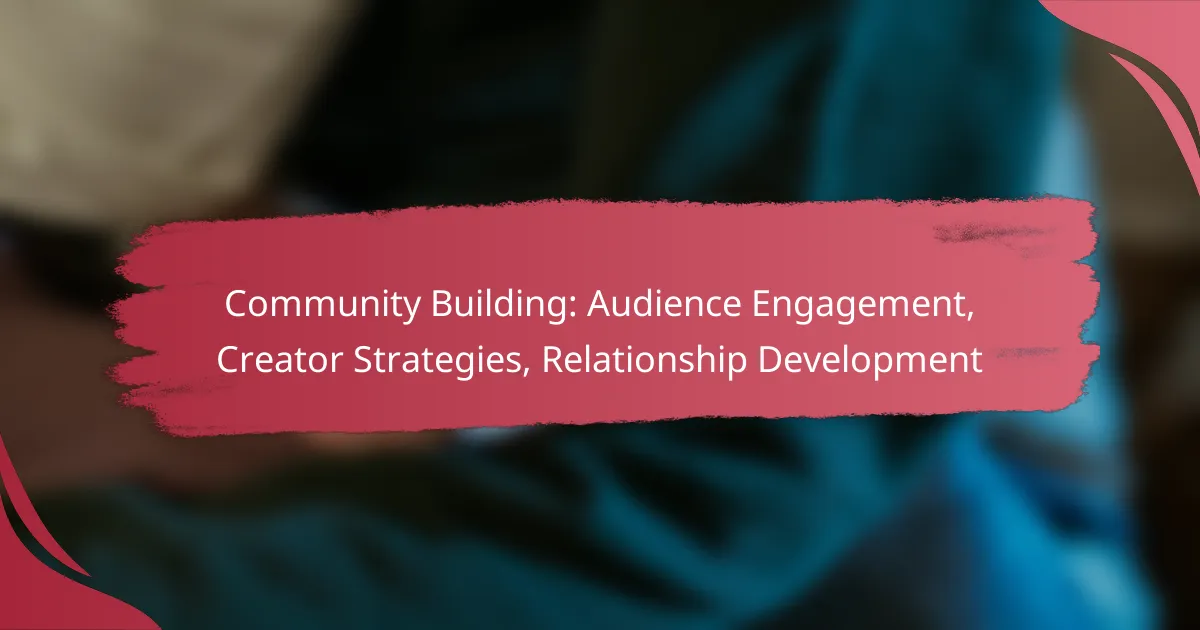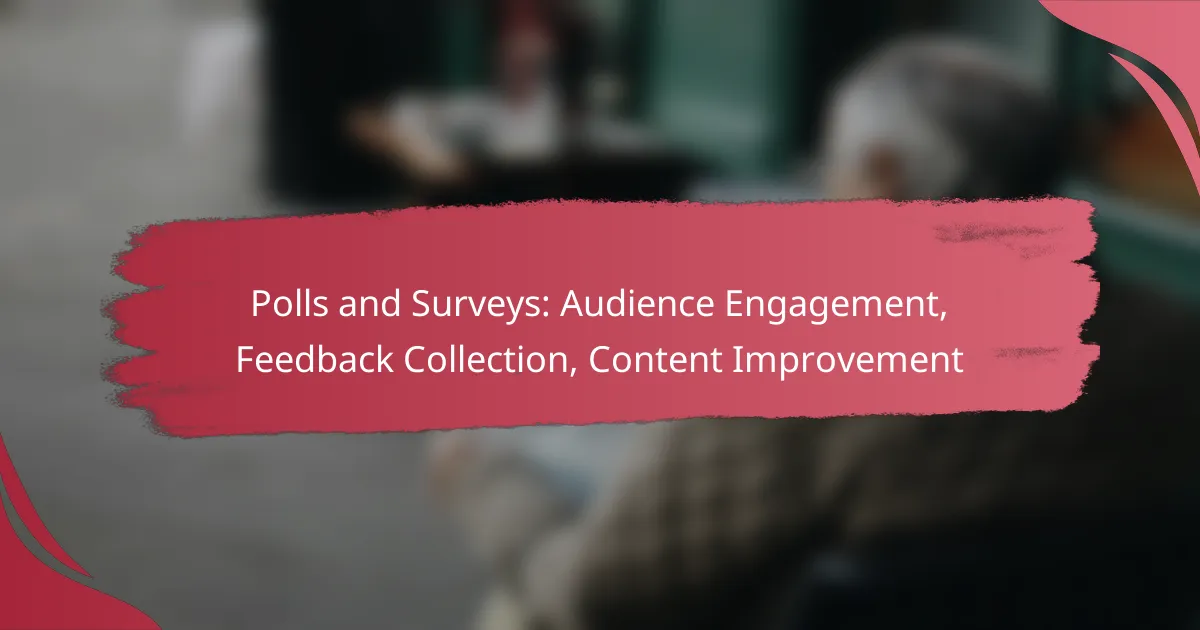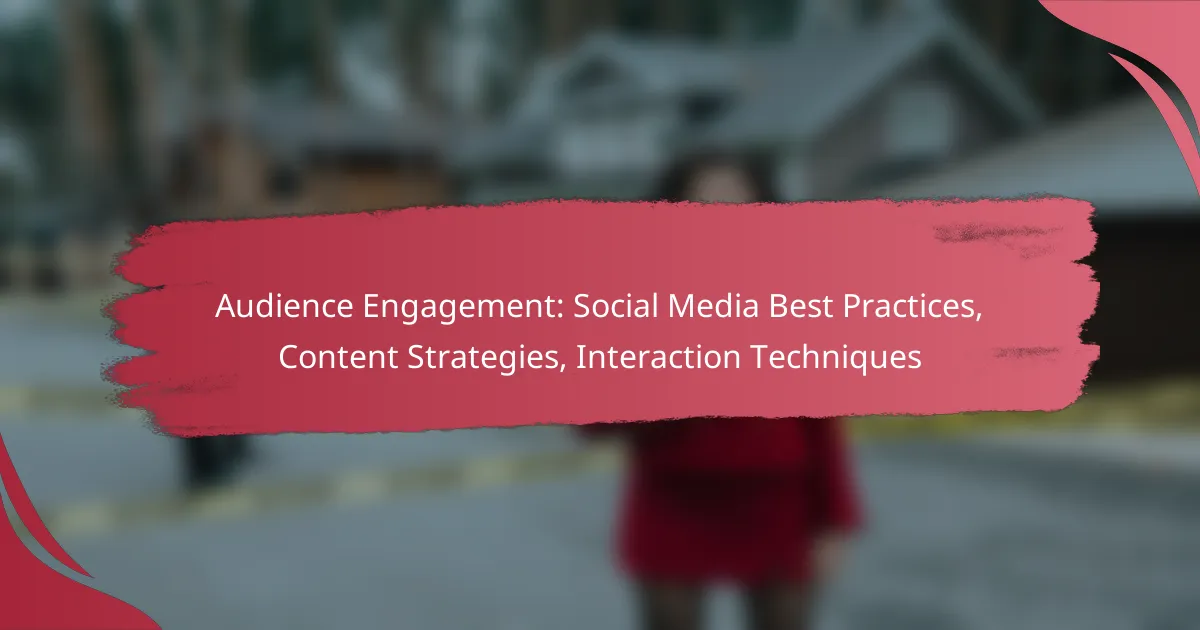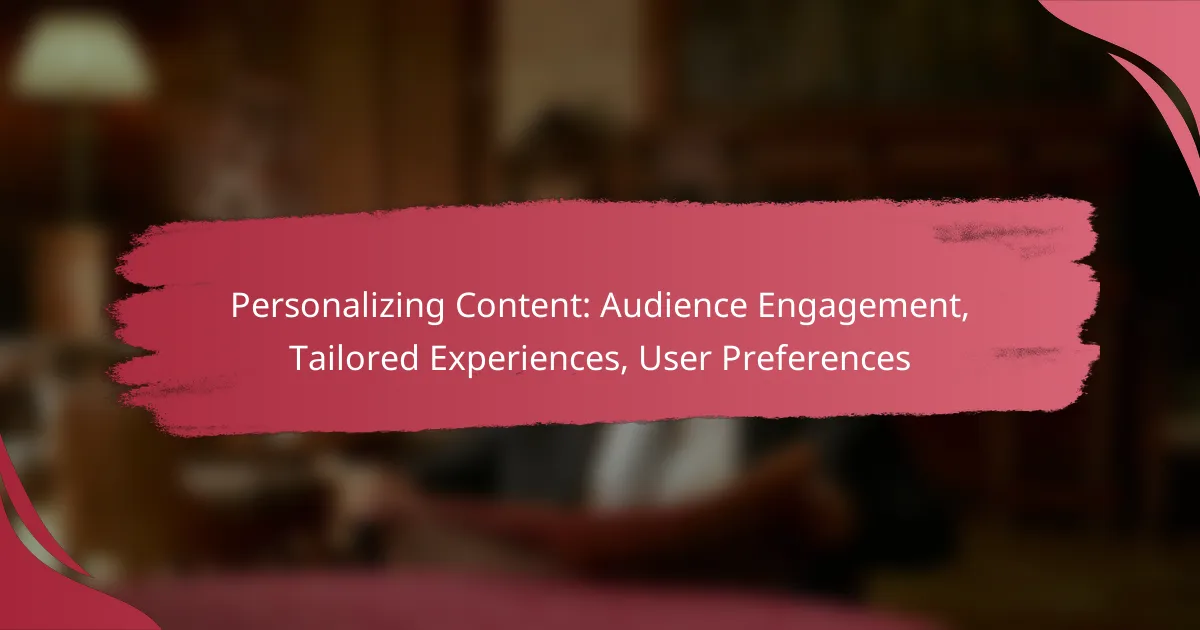Community building is essential for creators seeking to engage their audience and foster lasting relationships. By understanding audience needs and implementing effective strategies, creators can cultivate meaningful interactions that enhance loyalty and a sense of belonging. Personalized communication and consistent engagement play crucial roles in developing trust and deepening connections with followers.
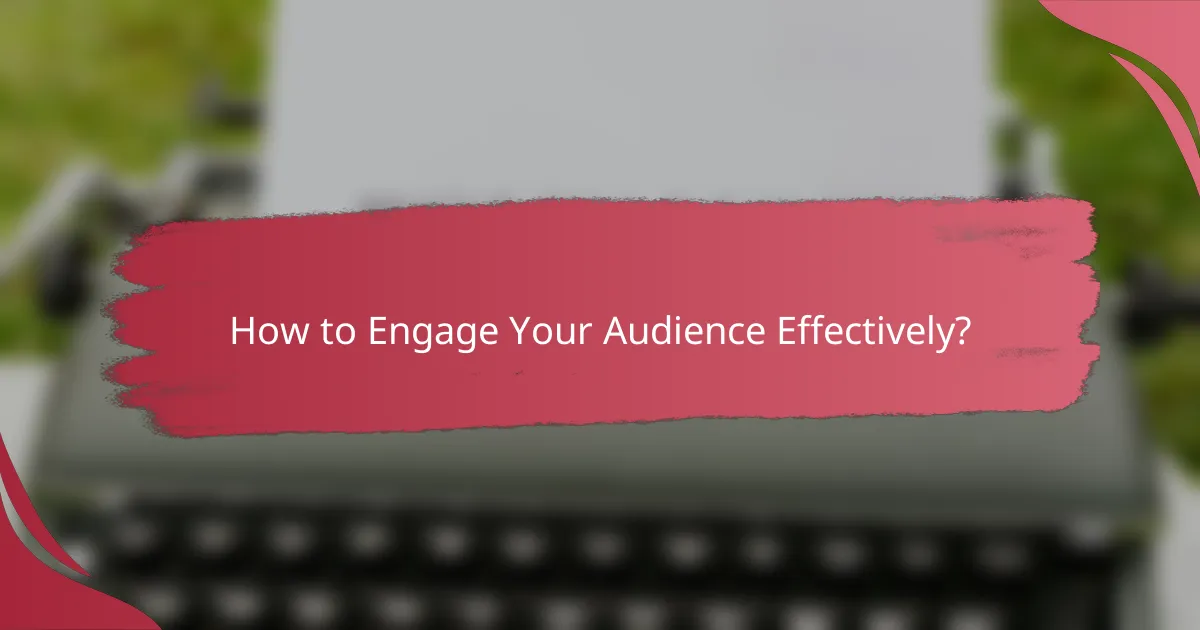
How to Engage Your Audience Effectively?
Engaging your audience effectively involves understanding their needs and creating meaningful interactions. This can be achieved through various strategies that foster connection and participation.
Utilizing Social Media Platforms
Social media platforms are essential tools for audience engagement, allowing creators to share content and interact directly with followers. Choose platforms that align with your audience demographics, such as Instagram for younger users or Facebook for a broader age range.
Regularly post updates, respond to comments, and use stories or polls to encourage interaction. Aim for a consistent posting schedule to keep your audience engaged and informed.
Creating Interactive Content
Interactive content, such as quizzes, surveys, and polls, can significantly enhance audience engagement. This type of content encourages participation and provides valuable insights into your audience’s preferences.
Consider incorporating interactive elements into your blog posts or social media updates. For example, a simple poll about a trending topic can spark discussion and increase engagement rates.
Hosting Live Events
Live events, whether virtual or in-person, offer unique opportunities for real-time interaction with your audience. These events can include webinars, Q&A sessions, or workshops that allow for direct communication and feedback.
Promote your events in advance and consider using platforms like Zoom or Facebook Live to reach a wider audience. Ensure to create a welcoming environment where participants feel comfortable sharing their thoughts and questions.
Building Online Communities
Creating online communities fosters a sense of belonging among your audience. Platforms like Discord or Facebook Groups can serve as dedicated spaces for your followers to connect and share experiences.
Encourage discussions by posing questions and sharing relevant content. Monitor the community to maintain a positive atmosphere and address any issues that may arise, ensuring that all members feel valued and heard.
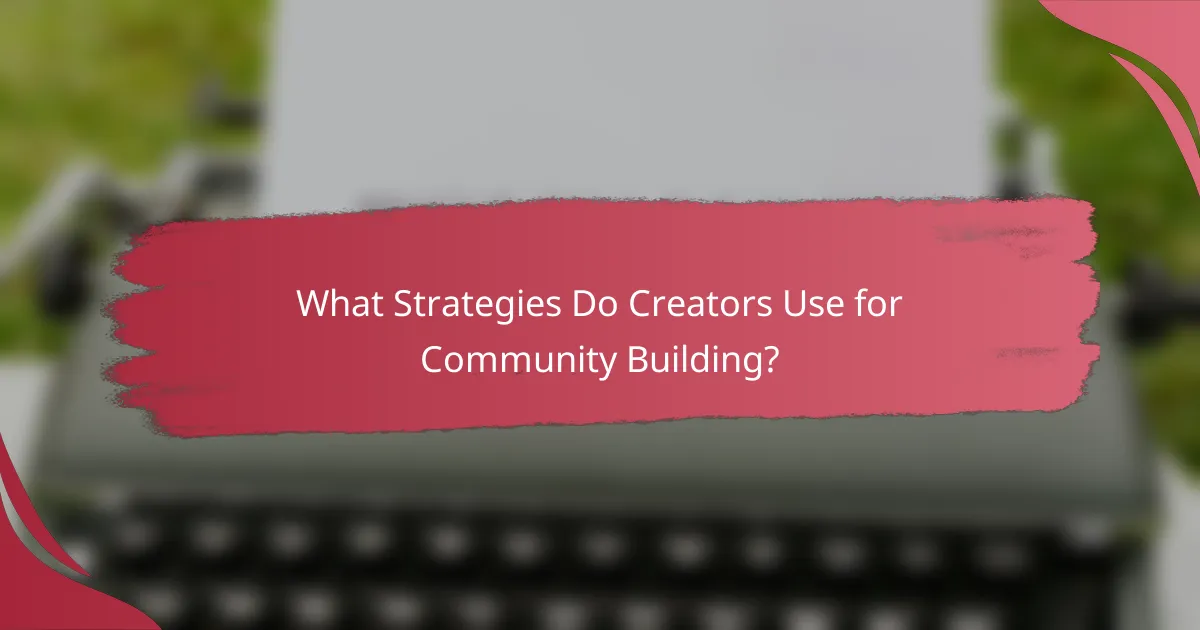
What Strategies Do Creators Use for Community Building?
Creators use various strategies for community building, focusing on engagement and relationship development. These methods foster a sense of belonging among followers and enhance loyalty to the creator’s brand.
Collaborative Projects
Collaborative projects involve creators working together on shared content or initiatives, which can significantly boost audience engagement. By pooling resources and audiences, creators can reach new followers and provide fresh perspectives.
For example, two YouTubers might co-host a series of videos, or a podcast host could collaborate with a guest to explore a relevant topic. This not only diversifies content but also creates a sense of community among the combined audiences.
Exclusive Content for Followers
Offering exclusive content is a powerful way to engage a community and reward loyal followers. This can include behind-the-scenes access, early releases, or special Q&A sessions that make followers feel valued and included.
Creators often use platforms like Patreon or subscription services to provide this exclusive content. Pricing can vary, but many creators charge a small monthly fee, typically ranging from $5 to $20, depending on the level of access provided.
Utilizing Influencer Partnerships
Influencer partnerships can amplify a creator’s reach and credibility within their community. By collaborating with influencers who share similar values or target audiences, creators can tap into established networks and gain new followers.
When considering partnerships, it’s essential to choose influencers whose audience aligns with your brand. This ensures that the collaboration feels authentic and resonates with both communities, leading to more meaningful engagement.
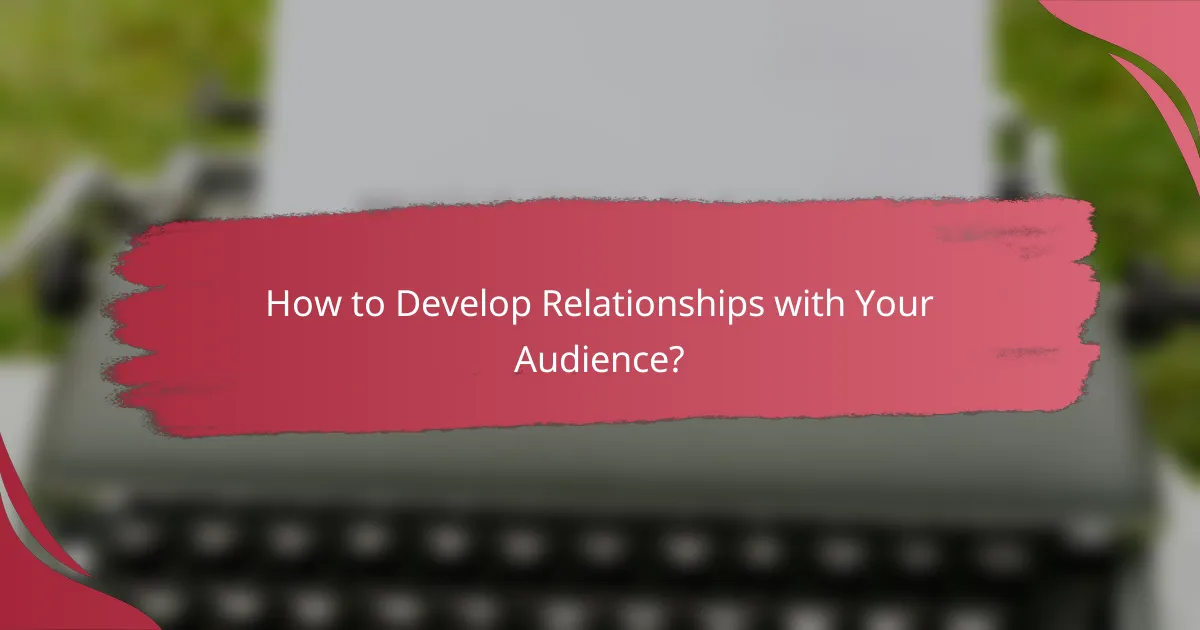
How to Develop Relationships with Your Audience?
Developing relationships with your audience involves creating meaningful interactions that foster trust and loyalty. This can be achieved through personalized communication, gathering feedback, and maintaining consistent engagement.
Personalized Communication
Personalized communication tailors your messages to individual audience members, making them feel valued and understood. Use names in emails, segment your audience based on interests, and customize content to meet their specific needs.
Consider using tools like email marketing platforms that allow for dynamic content insertion. For example, sending birthday greetings or exclusive offers based on past purchases can significantly enhance the personal touch.
Feedback and Surveys
Gathering feedback through surveys is essential for understanding your audience’s preferences and needs. Regularly ask for input on content, products, or services to ensure you are meeting their expectations.
Utilize simple tools like Google Forms or SurveyMonkey to create quick surveys. Aim for concise questions that can be answered in a few minutes, and consider offering incentives, such as discounts or entry into a prize draw, to encourage participation.
Consistent Engagement
Consistent engagement keeps your audience connected and informed. Schedule regular updates through newsletters, social media posts, or community events to maintain visibility and relevance.
Establish a content calendar to plan your interactions, ensuring a steady flow of information. Aim for a balance between promotional content and value-driven posts, such as tips or insights that resonate with your audience’s interests.

What Are the Key Metrics for Measuring Engagement?
Key metrics for measuring engagement include audience growth rate, engagement rate, and content shares and comments. These metrics help assess how effectively a community is interacting with content and growing over time.
Audience Growth Rate
Audience growth rate measures how quickly your community is expanding. This metric is typically calculated by comparing the number of new followers or subscribers over a specific period to the total audience size at the beginning of that period.
For example, if you start with 1,000 followers and gain 100 new followers in a month, your growth rate would be 10%. Aim for a steady increase, as rapid spikes may indicate temporary trends rather than sustainable growth.
Engagement Rate
Engagement rate quantifies how actively your audience interacts with your content. It is usually calculated by dividing the total engagement (likes, comments, shares) by the total reach or impressions, then multiplying by 100 to get a percentage.
A typical engagement rate can vary widely by platform, but a range of 1% to 5% is often considered healthy. Focus on creating compelling content that encourages interaction, as higher engagement rates can lead to better visibility and community loyalty.
Content Shares and Comments
Content shares and comments are direct indicators of how much your audience values and interacts with your content. Shares indicate that users find your content worth promoting, while comments reflect deeper engagement and conversation.
To enhance these metrics, encourage users to share their thoughts and experiences in the comments. Consider asking open-ended questions in your posts to stimulate discussion. Monitoring these interactions can provide valuable insights into audience preferences and help tailor future content.
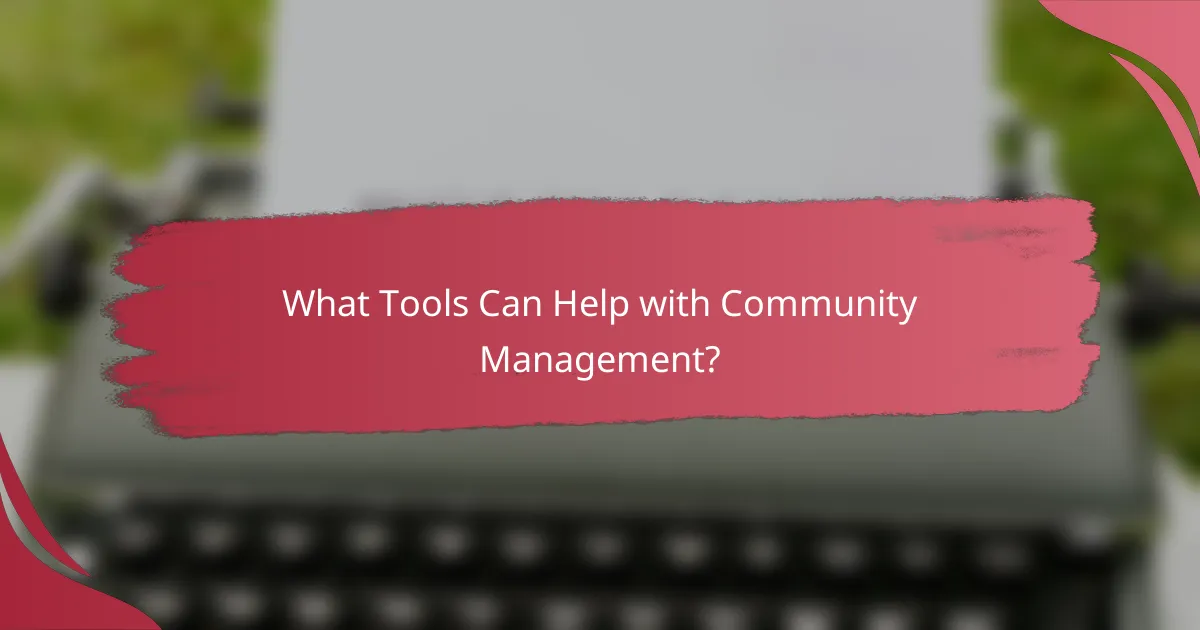
What Tools Can Help with Community Management?
Effective community management relies on various tools that facilitate engagement, interaction, and relationship building. These tools can enhance communication, streamline processes, and foster a sense of belonging among community members.
Discord for Community Interaction
Discord is a popular platform for community interaction, providing voice, video, and text communication channels. It allows creators to build dedicated servers where members can engage in discussions, share content, and participate in events.
When using Discord, consider creating different channels for various topics to keep conversations organized. You can also utilize features like roles and permissions to manage member access and responsibilities effectively.
To maximize engagement, host regular events such as game nights or Q&A sessions. This not only encourages participation but also strengthens relationships within the community. Avoid overwhelming members with too many notifications; instead, set clear guidelines for communication to maintain a positive environment.
